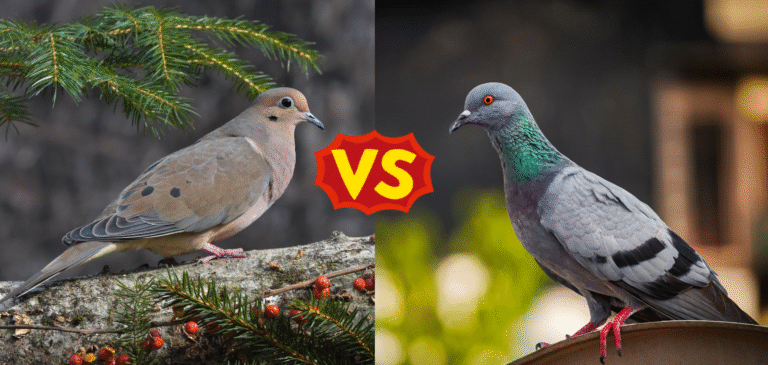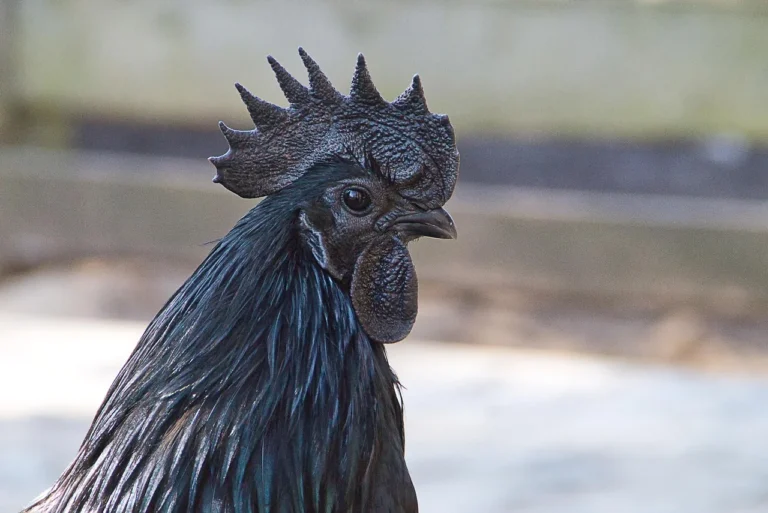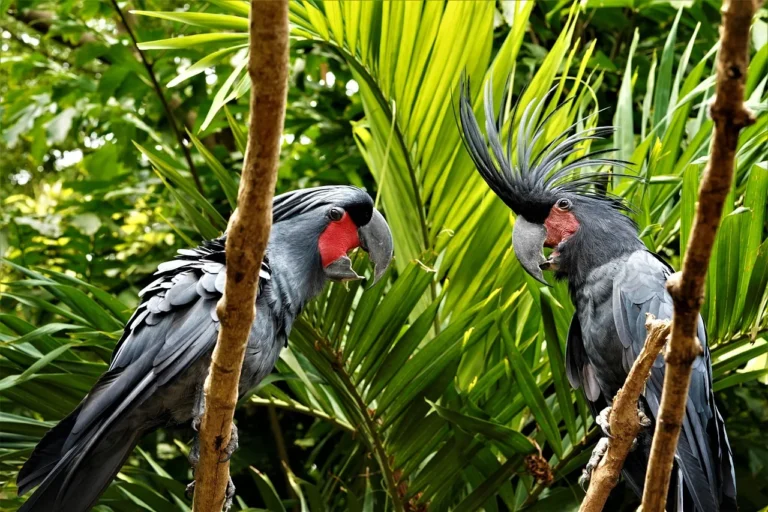Bird watching, a centuries-old tradition, is a captivating and entertaining hobby. People of all age groups find solace in seeing our feathered friends soaring high in the sky or perching in the branches. It’s an activity that offers us a glimpse into the wonderful world of avians. In a very profound way, birding connects us to nature. But, there’s only one condition: You must pick the right destination. There are numerous of the best places for bird watching in the world.
Choose the perfect location and you’ll be able to witness rare species and unique ecosystems you won’t find elsewhere. Whether you talk about toucans and macaws in the Amazon Rainforest or the Southern ground-hornbill in Kruger National Park, each place boasts remarkable bird species. That’s why visiting these premium birdwatching destinations will elevate your birding experience. Eager to learn more? Keep going down.
Today, we’ll talk about the seven best places in the world for birdwatching. You’ll discover where to find spectacular species, learn optimal visiting times, and gather practical tips. From rainforest canopies to coastal cliffs, these birding paradises await your binoculars.
What Makes a Birdwatching Spot Truly Great?
A seasoned birder or newcomer, there’s something you must know. Always remember, not all locations offer equal experiences. There are several key qualities that only truly exceptional birding hotspots share. These include:
Biodiversity: Prime destinations host hundreds of species in relatively small areas. The chance to spot numerous rare bird species in a single trip makes these locations special. Many dedicated birders build their life lists at these biodiversity-rich sites.
Accessibility: It’s another factor that turns a destination into a birdwatcher’s haven. There’s a balance between remoteness and reasonable access. After all, what would you do about a place which is famous for its biodiversity but so remote and inaccessible that reaching it requires days of strenuous travel, expensive permits, or even political clearance? A real birding destination guarantees facilities like trails, hides, and viewing platforms without disturbing natural habitats.
Conservation Status: If you’re a new birder, this term might be reading about this term for the first time. Conservation status refers to the health of bird populations and their environment. Protected areas generally provide better birdwatching experiences. They safeguard critical habitats and maintain healthy ecosystems for diverse species.
Expert Guides: Last but not least, look for a place where you can find expert guides. It can really transform your birding trip into an unforgettable adventure. Local guides know exactly where elusive species hide. Their knowledge of calls, behaviors, and habitats dramatically increases your sightings.
These are the main elements that you should watch out for while selecting a location to indulge in your hobby. If you’re a bird photography enthusiast, it’s important to ensure that the chosen destination has good lighting and clear sightlines. The world’s best birding spots often provide perfect settings for capturing stunning avian images.
Where to Go Birdwatching in the World
From the icy wetlands of Hokkaido in Japan to the geothermal wonders of the Yellowstone National Park in the United States, there are many spectacular birdwatching destinations. Each of these places has something unique to offer. Let’s have a look at the top locations to go birdwatching in the world:
The Amazon Rainforest – Brazil & Peru
One of the finest spots on Earth for seeing many different types of avian life. The Amazon Rainforest comes top of the list for the wide variety of birds one can witness here. According to statistics, the region is home to about 1300-1500 species, some of which are endemic to the area. As per WWF, it is roughly 13% of all birds worldwide. In a true sense, diversity here outpaces any other location in our blog.
Colorful macaws (Ara) soar above the canopy while toucans (Ramphastidae) hop between fruit-laden branches. Amazon offers opportunities to spot rarities like the harpy eagle (Harpia harpyja) and hoatzin (Opisthocomus hoazin). Many species here exist nowhere else on Earth. For optimal bird watching, visit during the dry season from June to November. Birds become more active and visible as they gather around shrinking water sources. Early mornings yield the most sightings when our feathered friends actively feed and call.
Kruger National Park – South Africa
Spread across approximately 7,523 square miles, the Kruger National Park in South Africa is the second-best place for birdwatching in the world. Visiting this hotspot means you’ll be enjoying the ultimate African birdwatching experience. With over 500 species inhabiting this region, it is more famous for the “Big Six” birds. These include:
- Lappet-faced vulture (Torgos tracheliotos)
- Saddle-billed stork (Ephippiorhynchus senegalensis)
- Martial eagle (Polemaetus bellicosus)
- Kori bustard (Ardeotis kori)
- Pel’s fishing owl (Scotopelia peli)
- Southern ground hornbill (Bucorvus leadbeateri)
The park’s accessibility sets it apart from many premier birding destinations. Well-maintained roads allow self-guided safaris through multiple habitats. Birds of prey dominate the skies while colorful rollers, bee-eaters, and kingfishers flash through woodlands. Visit between September and March when migratory species arrive from Europe and Asia. This coincides with the rainy season when the landscape turns lush. Birds display breeding plumage and active nesting behaviors during this period.
Danube Delta – Romania
Within its UNESCO-protected labyrinth, Europe’s largest wetland, the Danube Delta, hosts an extraordinary collection of birds. Spanning an area of about 5,165 sq. km, this pristine location is a network of channels, lakes, and reed beds. Known for the avian variety, birders can witness 312 avian species here. In other words, it’s the ultimate birdwatching destination in Europe for birdwatchers.
If you’re lucky, you can see a massive gathering of pelicans (Pelecanus). In fact, it’s the region’s largest, creating spectacular viewing opportunities. Glossy ibis (Plegadis falcinellus), numerous heron species, and several eagle varieties thrive in this protected wilderness. Few European destinations offer such concentrated bird diversity. The delta’s accessibility from major European cities makes it ideal for international bird watchers. Small boats navigate the waterways, bringing visitors close to otherwise inaccessible habitats. Traditional villages throughout the region offer authentic accommodation options.
Bharatpur Bird Sanctuary – India
Situated in the historically rich country of India, this national park is undoubtedly a reliable birding destination for international birders. Within its 28.73 km² area, the Keoladeo National Park is home to above 370 bird species. This is actually a compact wetland sanctuary with carefully managed water levels. Such a friendly atmosphere creates an ideal habitat for resident and migratory birds.
The winter months transform Bharatpur into a bird watcher’s paradise. Thousands of migratory waterfowl arrive from Siberia and Central Asia. Painted storks (Mycteria leucocephala), spoonbills (Platalea), and numerous duck species create remarkable gatherings at this time. The park’s flat terrain and well-maintained paths make it exceptionally accessible. Visitors explore by foot, bicycle, or traditional cycle rickshaw with knowledgeable guides. Photography opportunities abound with many birds accustomed to human presence.
Yellowstone National Park – USA
With its dramatically varied landscapes, this iconic park hosts nearly 300 avian species. That said, the Yellowstone National Park in the United States provides tourists with a unique birdwatching experience. Its geothermal features, mountains, and forests foster a welcoming environment for feathered friends from all over the world. This is actually a diversity of habitats where you can find solace in seeing your favorite creatures.
Bald eagles (Haliaeetus leucocephalus) and ospreys (Pandion haliaetus) fish the park’s pristine rivers and lakes. Sage grouse (Centrocercus urophasianus) perform elaborate courtship displays on high plateaus. Elusive species like great gray owls (Strix nebulosa) and black-backed woodpeckers (Picoides arcticus) reward patient observers in forest habitats. The park’s excellent infrastructure makes bird watching accessible for all experience levels. Well-maintained boardwalks and viewing platforms provide stability for spotting scopes. Ranger-led programs throughout the summer specifically focus on bird identification.
Hokkaido – Japan
Want to experience spectacular winter birdwatching? Look no further than Hokkaido. This northernmost island in Japan is a paradise for those who love witnessing the most beautiful creatures on Earth. It boasts snow-covered landscapes that create dramatic backdrops for some of Asia’s most impressive birds. In fact, this region transforms into a photography haven when red-crowned cranes (Grus japonensis) dance on snow.
Steller’s sea eagles (Haliaeetus pelagicus), which are among the world’s largest eagles, gather along ice floes. Their massive eight-foot wingspans and striking black-and-white plumage create unforgettable sights. Whooper swans (Cygnus cygnus), white-tailed eagles (Haliaeetus albicilla), and Blakiston’s fish owls (Bubo blakistoni) add to the winter spectacle. January and February offer optimal viewing despite cold temperatures. Several locations maintain feeding stations that concentrate bird activity. Specialized photo tours provide access to prime viewing areas at perfect times.
Cape Kidnappers – New Zealand
Last but not least, it’s time we talk about Cape Kidnappers. Surprisingly, it’s known as the world’s most accessible gannet colony. You’ll be surprised to know that about 25,000 Australian gannets (Morus serrator) nest on this dramatic headland near Napier. Their breeding behaviors and aerial displays offer world-class bird watching.
The colony sprawls across two distinct areas: Black Reef and the Plateau. Visitors observe birds from mere feet away without disturbing their natural behaviors. Watching gannets plunge into the ocean at 60 mph demonstrates their remarkable hunting technique. Beyond gannets, the surrounding area hosts numerous seabirds and shorebirds. Visit between November and February when breeding activity peaks. Chicks hatch in December and grow rapidly on regular feedings. The colony becomes increasingly active as young birds prepare for departure in April.
Bird Watching Tips for International Travel
Now that we’ve discussed the best spots in the world for birding, it’s time to focus on some valuable birdwatching tips for your international travel. The following guidelines will help enhance your experience and turn your trip into an unforgettable birding adventure:
- Choose the right season for your trip
- Invest in quality equipment
- Use a good birdwatching field guide
- Pack clothing in neutral colors that won’t startle wildlife
- Consider waterproof options for unpredictable weather
- Research target species before traveling to identify birds
- Learn basic calls of priority birds to locate them more easily
- Follow ethical birding practices
Which Birding Haven Will You Visit First?
In short, all of the above are the best birdwatching destinations in the world. These places have the magic to transform an occasional hobbyist into a passionate advocate. Each location boasts a unique variety of our avian friends. Witnessing them will establish your connection with nature and enhance your love for birds. Don’t forget to share your experience after visiting any of these places.
Keep visiting our blog for more valuable and insightful content on birdwatching.



